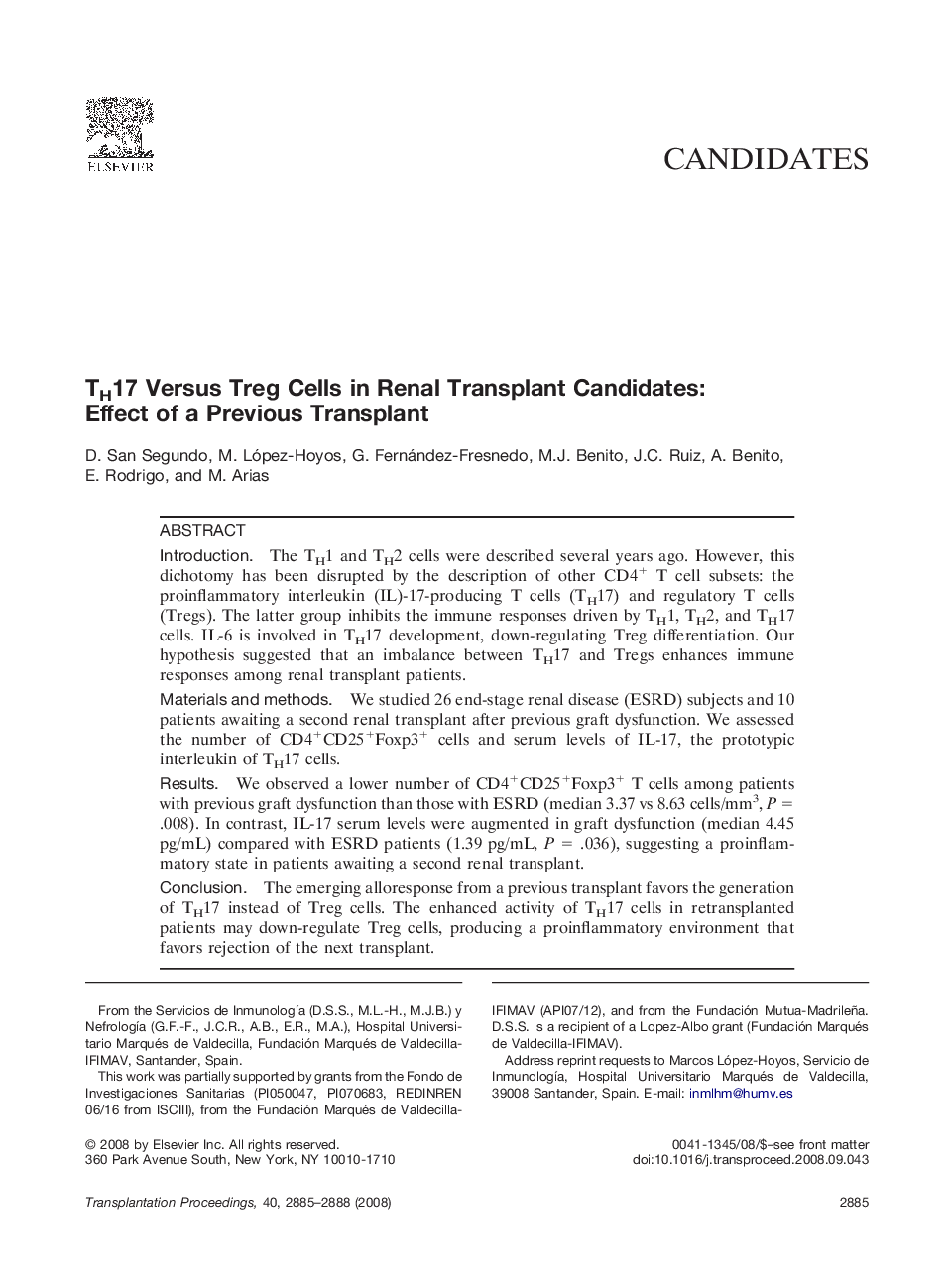| Article ID | Journal | Published Year | Pages | File Type |
|---|---|---|---|---|
| 4261294 | Transplantation Proceedings | 2008 | 4 Pages |
IntroductionThe TH1 and TH2 cells were described several years ago. However, this dichotomy has been disrupted by the description of other CD4+ T cell subsets: the proinflammatory interleukin (IL)-17-producing T cells (TH17) and regulatory T cells (Tregs). The latter group inhibits the immune responses driven by TH1, TH2, and TH17 cells. IL-6 is involved in TH17 development, down-regulating Treg differentiation. Our hypothesis suggested that an imbalance between TH17 and Tregs enhances immune responses among renal transplant patients.Materials and methodsWe studied 26 end-stage renal disease (ESRD) subjects and 10 patients awaiting a second renal transplant after previous graft dysfunction. We assessed the number of CD4+CD25+Foxp3+ cells and serum levels of IL-17, the prototypic interleukin of TH17 cells.ResultsWe observed a lower number of CD4+CD25+Foxp3+ T cells among patients with previous graft dysfunction than those with ESRD (median 3.37 vs 8.63 cells/mm3, P = .008). In contrast, IL-17 serum levels were augmented in graft dysfunction (median 4.45 pg/mL) compared with ESRD patients (1.39 pg/mL, P = .036), suggesting a proinflammatory state in patients awaiting a second renal transplant.ConclusionThe emerging alloresponse from a previous transplant favors the generation of TH17 instead of Treg cells. The enhanced activity of TH17 cells in retransplanted patients may down-regulate Treg cells, producing a proinflammatory environment that favors rejection of the next transplant.
